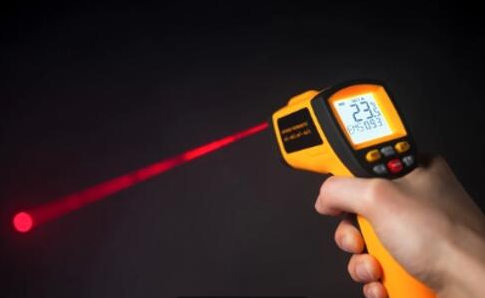
Know More About Infrared Radiation
Infrared radiation, or simply infrared, is a type of electromagnetic radiation with wavelengths longer than those of visible light but shorter than those of microwaves. It is a form of heat radiation that can be detected by various instruments and has many applications in a wide range of fields, including physics, chemistry, biology, medicine, and industry.
Development of infrared radiation
The development of infrared technology can be traced back to the late 1800s, when William Herschel discovered that the temperature of different colors in the visible spectrum varied. He conducted an experiment in which he passed sunlight through a prism and measured the temperature of each color with a thermometer. He found that the temperature increased from blue to red, and then increased further beyond the red end of the spectrum, where there was no visible light. Herschel had discovered infrared radiation.
In the early 1900s, the first practical applications of infrared technology emerged. One of the earliest was in the field of thermography, which uses infrared radiation to measure the temperature of objects. The first infrared thermometer was developed in 1929 by a German physicist named Max Planck. It used a thermopile, a device that converts thermal energy into electrical energy, to measure the temperature of a surface by detecting the amount of infrared radiation it emitted.
In the years that followed, infrared technology continued to evolve. In the 1950s, the first infrared cameras were developed, which allowed for the visualization of infrared radiation. These early cameras used cooled detectors, which could detect even the faintest amount of infrared radiation. However, they were bulky and expensive, and their use was limited to specialized applications.
In the 1970s, the development of uncooled infrared detectors made infrared technology more accessible. These detectors did not require cooling, which made them smaller, cheaper, and more versatile. As a result, infrared cameras became more widespread and found use in a variety of applications, including security and surveillance, industrial inspection, and medical imaging.
Applications of Infrared Radiation
1. Infrared temperature measuring
One of the most common applications of infrared radiation is temperature sensing. Infrared temperature sensor, also known as IR thermometer or pyrometer, is widely used in industry, medicine, and research to measure the temperature of objects that are difficult or impossible to reach with contact thermometers. IR thermometers use the fact that all objects emit infrared radiation in proportion to their temperature, according to the Stefan-Boltzmann law. The sensor detects the intensity of the radiation and converts it into an electrical signal, which is then processed to display the temperature.
IR thermometers are very versatile and can measure temperatures ranging from -50°C to 2000°C, depending on the type of sensor used. They are used in many industries, such as metallurgy, glass manufacturing, ceramics, and food processing, to monitor temperature during various processes and ensure quality control. They are also used in medical settings to measure body temperature without physical contact, which is particularly useful for patients with contagious diseases or for screening large crowds.
2. Infrared spectroscopy
Another application of infrared radiation is in spectroscopy, a technique used to study the properties of matter based on its interaction with electromagnetic radiation. Infrared spectroscopy is particularly useful for studying the vibrational and rotational modes of molecules, which can provide information on the chemical structure, composition, and bonding of the molecule. Infrared spectroscopy is widely used in chemistry, biochemistry, and materials science to identify and quantify chemical compounds, study chemical reactions, and analyze the properties of materials.
3. Infrared remote sensing
Infrared radiation is also used in remote sensing, a technique used to collect data on the Earth’s surface and atmosphere from a distance. Remote sensing involves the use of instruments, such as satellites, airplanes, and drones, to detect and measure various forms of electromagnetic radiation emitted or reflected by the Earth. Infrared radiation is particularly useful for remote sensing because it can penetrate clouds and haze and reveal information about temperature, moisture, vegetation, and other features of the Earth’s surface and atmosphere.
4. Infrared cameras
Infrared imaging is another important application of infrared radiation. Infrared cameras, also known as thermal cameras, are used to produce images of the thermal radiation emitted by objects. Infrared cameras can detect temperature differences as small as 0.1°C and can produce images in real-time, making them useful for a wide range of applications, such as building inspection, firefighting, surveillance, and military operations.
Infrared radiation is also used in astronomy to study the properties of celestial objects. Infrared telescopes can detect infrared radiation emitted by stars, galaxies, and other objects that are not visible in the visible spectrum. Infrared observations have provided important insights into the formation and evolution of stars and galaxies, the structure of the universe, and the search for extra.







